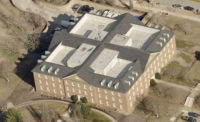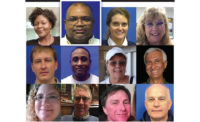Virginia Beach, Va., police have yet to determine the motive for a city engineer’s May 31 shooting rampage at the municipal complex that left 12 people dead, including a local contractor and public works co-workers, and wounded four others.
In a public briefing, Deputy Chief Patrick L. Gallagher said that while investigators had learned much about the background and behavior of 40-year-old DeWayne Craddock, the exact cause for the nine-year employee’s actions remained elusive.
Craddock died shortly after a gun battle with police. The investigation remains ongoing.
Building 2, where the shootings took place, has been closed since the incident, with public works personnel and other city employees relocated. The city is currently weighing options to demolish or renovate the building.
Many of the more than 750 people interviewed by police since the shooting described Craddock as “quiet, polite, a nice guy and a good listener”—although some victims’ family members and former co-workers disputed those. Gallagher added that Craddock had no affiliation with external groups, debt problems or physical or mental health issues.
Craddock’legally purchased a total of five guns between 2016 and 2017, and held permits for both a concealed weapon and sound suppressor that was used in the shooting. Body armor he ordered in April had not been delivered before the May 31 incident.
After joining Virginia Beach’s public works department in 2010, Craddock regularly met annual job performance standards until 2017, when he was placed on a performance improvement plan.
His 2018 evaluation indicated “improvement required” and included a written reprimand for job performance from a supervisor, who was not present when the shootings occurred.
While Craddock had apparently not received an evaluation for 2019, his work was expected to be rated “satisfactory.”
Gallagher provided no details on an apparent dispute between Craddock and the city’s purchasing department that occurred in the weeks leading up to the shooting, other than the fact that the engineer’s supervisors supported him in the matter.
On the morning of the shooting, Craddock emailed a letter of resignation and two-weeks notice to his immediate supervisor, citing “personal reasons.”
Police analysis of Craddock’s computer activity that day revealed mostly work-related emails, but also web searches for maps of city facilities, including Building 2.
In the early afternoon, Craddock visited three project sites with two co-workers, neither of whom recalled any unusual behavior. Returning to his office at 3:24 pm, he sent his last work-related email before leaving the building to retrieve weapons from his car.
According to the timeline provided by Gallagher, Craddock’s first victim, contractor Herbert Snelling, was killed in the municipal center’s parking lot around 4:00 pm. Craddock then entered Building 2, and over the next 15 minutes randomly shot people he encountered as he went from floor to floor.
Police then cornered Craddock in a room, where he was finally subdued after a nearly 30-minute long firefight. Alhough wounded, he continued to resist efforts to be taken into custody or receive medical assistance and was pronounced dead at a Virginia Beach hospital at 5:32 pm.
Gallagher said police have reviewed only about half of the more than 11 terabytes of digital data generated by the investigation, which will likely last another six to nine months. An FBI analysis unit is also involved, he added.
City Council members also received an update on an independent investigation being conducted by Hillard Heintze, a Chicago-based security risk management firm.
CEO Arnette Heintze reported that interviews, surveys and public outreach sessions had revealed multiple concerns about a hostile work environment that put African-American employees at a disadvantage.
“This is a key area of our investigation as it relates to behaviors and motives that give rise to incidents such as this,” Heintze said. Craddock was African-American.
Hillard Heintze will delve into the topic further with an expanded survey of city employees. Heintze said the company had also investigated security at the municipal complex, and would offer best practices for improvements when it submits its final report in mid-November.
While survivors and victims’ family members expressed frustration with the inconclusive updates, Mayor Robert M. Dyer closed the briefing with a reminder that the investigation is far from complete. He also provided assurances that the final reports of both investigations would be made public.
“We still have work to do,” Dyer said.



